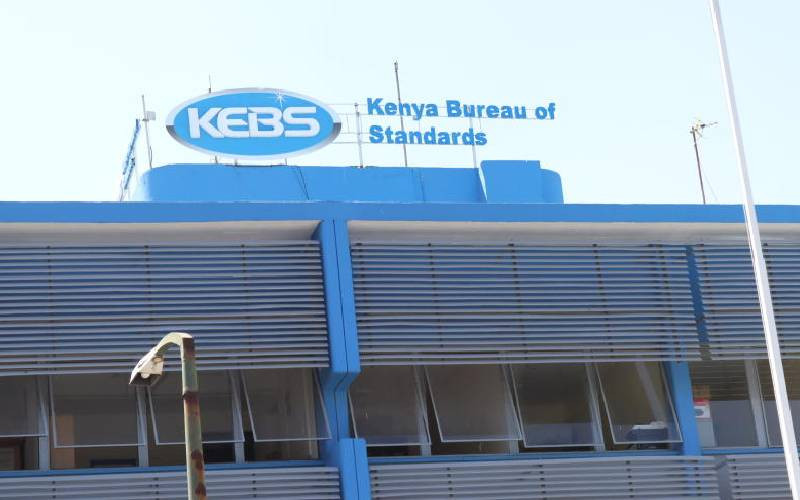 KEBS headquarters.
KEBS headquarters.
This levy will be calculated after deducting VAT, excise duty, and discounts, with an annual cap of Sh4 million for the first five years, but it exempts manufacturers whose annual turnover does not exceed KSh 5 million.
While the levy aims to boost the agency’s financial capacity and enhance product quality compliance, many manufacturers warn that it comes at a difficult time for the sector, already burdened by high production costs, currency instability, and weak demand. As Kenya seeks to expand its industrial base, the question remains: will this new levy strengthen standards or slow down the country’s manufacturing ambitions?
The paradox is that the Kenya Vision 2030 and the Bottom-Up Economic Transformation Agenda (BETA) both identify industrialisation as central to achieving middle-income status. However, despite this vision, Kenya’s manufacturing share of GDP has stagnated around 7–8% for nearly two decades, way below the government’s target of 15%. Kenya’s approach has been largely private-sector-driven, with the government acting more as a regulator than a strategic partner.
This move is a big blow to the already struggling manufacturing industries. Manufacturers in Kenya already face several structural challenges: high energy costs, foreign-exchange volatility, especially for imported raw materials, competitive pressures from imports, and slow domestic demand growth.
In such a context, even a “modest” tax can tip the scale for firms nearer to the margin. Furthermore, since the levy raises production costs for manufacturers, many companies may try to transfer the additional expense to consumers, particularly in sectors such as processed foods, packaged goods and construction materials, sparking worries about potential inflationary effects.
Our neighbour, Ethiopia, famously dubbed as the “Lion of Africa”, stands out in Sub-Saharan Africa for its state-led industrialisation model, which borrows elements from East Asian “developmental states” like South Korea and China. The government’s approach has combined public investment, industrial policy, and selective subsidies to promote manufacturing and exports. Electricity tariffs for industries in Ethiopia have historically been among the lowest in Africa, due to large-scale investments in hydropower projects.
The government channels low-interest loans through the Development Bank of Ethiopia (DBE) for priority sectors such as manufacturing, export agriculture, and import substitution. China, on the other hand, used targeted subsidies and technology upgrading to grow into the giant it is today. Local governments competed to attract industries, leading to infrastructure upgrades and efficiency.
The decision by KEBS to impose a 0.2% standards levy is justifiable in terms of strengthening its financial capacity, as regulatory agencies need adequate resources to function efficiently. However, given the current challenges facing Kenya’s manufacturing sector, such as intense competition, high operational costs, currency volatility, and narrow profit margins, the levy presents significant risks to several industries. Unless it is implemented with clear guidelines, compensatory measures (like tax incentives, modernisation subsidies, or transparent reinvestment of the collected funds into industry development), it could hinder industrial growth, weaken competitiveness, and lead to higher consumer prices.
Kenya can emulate Ethiopia and Asia by allowing the government to act as a strategic investor and coordinator, not just a regulator. Industrial policy should be long-term and performance-based, rewarding firms that create jobs, export, and innovate.
Kenya has the potential to become East Africa’s industrial hub, but this requires strategic state support, policy consistency, and targeted incentives not additional taxes. Countries like Ethiopia, Vietnam, and China succeeded by balancing government intervention with private sector dynamism, ensuring that subsidies and incentives were tied to clear performance outcomes.
Eunice Kandie is a Food Security &
Livelihood Expert















